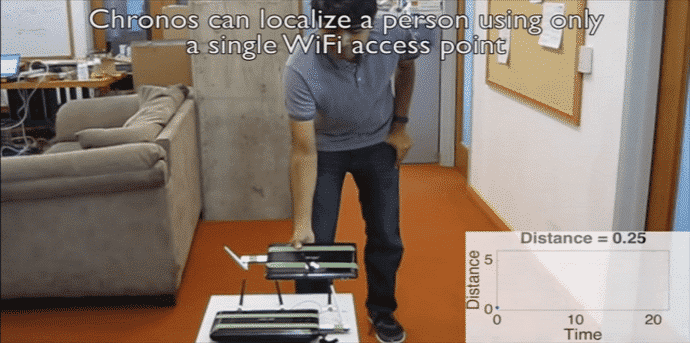You can prevent your neighbours from stealing your bandwidth with this new Wi-Fi
While your modern Wi-Fi could be providing far reaching signals from your router, there are chances that this network could be possibly extending to your neighbours’ homes and out onto the street too. If your data is not properly secured, then anyone can snoop in and access your bandwidth.
So, what can you do about it? What if Wi-Fi was somehow smart enough to prevent people from accessing your bandwidth who weren’t you?
Researchers at the Massachusetts Institute of Technology (MIT) are developing a new wireless system that can physically detect all users on a particular network with great accuracy, down to within tens of centimetres. This kind of technology would not only allow us to let go Wi-Fi passwords but also provide better security for our devices by only allowing specific, legitimate users to access data.
Called Chronos, the system detects users by calculating the amount of time it takes for data to travel from their device, for instance, a notebook or smartphone to the router’s access point. It will take a shorter or longer amount of time for data packets to reach the router depending on your physical distance from the router. Chronos is basically able to find out your location based on how long that is.
The prototype was put to test by the researchers in a two-bedroom apartment with four occupants, and the system could properly recognize which room each resident was in 94 percent of the time. In another experiment, set in a cafe, Chronos had 97 percent accuracy in finding out legitimate users inside the building, and ‘intruders’ loitering outside.
Chronos, which can run on only one access point, is 20 times more precise than existing systems that can limit the position of a user, according to the researchers.
Instead Chronos works by skipping between different frequency channels, collecting several different measurements of the distance between the access point and the user. To find out the actual distance, it stitches all these together, which is how it can be precise to within centimetres.
“By devising a method to rapidly hop across these channels that span almost one gigahertz of bandwidth, Chronos can measure time-of-flight with sub-nanosecond accuracy, emulating with commercial Wi-Fi what has previously needed an expensive ultra-wideband radio,” said Microsoft researcher Venkat Padmanabhan, who was not involved with the study. “This is an impressive breakthrough and promises to be a key enabler for applications such as high-accuracy indoor localisation.”
While the high-accuracy localisation would not only be useful for obstructing people from stealing your Internet, but also the same detection abilities could also assist you in finding lost devices or control things inside your home, whether it is everyday home appliances (like air con) or more forward-looking applications.
“From developing drones that are safer for people to be around, to tracking where family members are in your house, Chronos could open up new avenues for using Wi-Fi in robotics, home automation, and more,” said Deepak Vasisht, one of the researchers.
“Imagine having a system like this at home that can continuously adapt the heating and cooling depending on number of people in the home and where they are,” added co-author Dina Katabi. “Eliminating the need for cooperation between Wi-Fi routers opens up many exciting new applications for localisation.”
The researchers’ paper was presented at this month’s USENIX Symposium on Networked Systems Design and Implementation (NSDI ’16).

